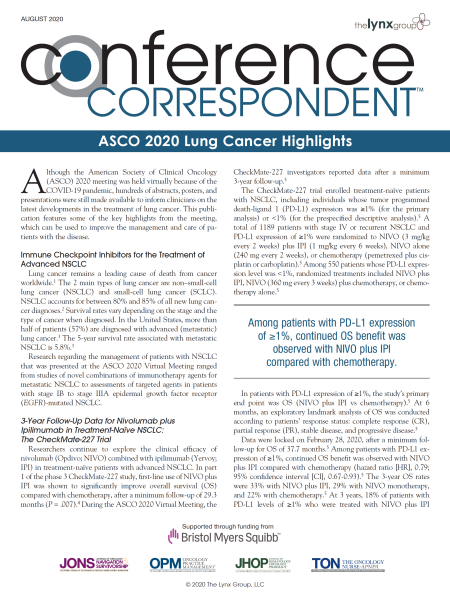
- CHECKMATE 9LA PUBLICATION UPDATE
- CHECKMATE 9LA PUBLICATION SKIN
- CHECKMATE 9LA PUBLICATION TRIAL
- CHECKMATE 9LA PUBLICATION PLUS
the typical AEs associated with chemotherapy because the control arm basically continued on chemotherapy.
CHECKMATE 9LA PUBLICATION SKIN
Grade 3 and 4 AEs occurred in 4% of patients with skin toxicity, 3% of patients with endocrine toxicity, 6% of patients with gastrointestinal toxicity-I would expect the majority of those are immune-related colitis-liver function abnormalities in 4% of patients, kidney disease in 2% of patients, and what appears to be pneumonitis in 2% of patients. This is in a regimen that uses ipilimumab every 6 weeks, and is not a benign regimen by any means, but the tolerance is much better than with a higher dose of.
CHECKMATE 9LA PUBLICATION PLUS
2 When people think about ipilimumab/nivolumab, they are reminded of the AE profile when this regimen was first started, where patients would receive docetaxel plus ipilimumab at 3 mg/kg every 3 weeks, and that is a regimen that has a lot of AEs. What did this study show about the safety and tolerability of this combination?Ĭoncentrating on immunotherapy-related adverse events, the great majority of them were grade 1 or 2. Those curves look very similar.įor patients who had a high PD-L1 expression, where you expect that these patients have a better response to immunotherapy, you can see a little bit better OS for this patient population, with a median of 19 months. Those who had a PD-L1 1% had the important finding of 28% of patients alive at 36 months, in contrast to the PD-L1–negative there was a quarter of patients that were alive at 36 months. PD-L1 staining did not appear to have much of a difference.

Ongoing response at 3 years was a little bit less than a quarter of patients in the experimental arm versus only 14% in the chemotherapy alone arm. The duration of response was 12.4 months in the investigational arm versus 5.6 in the chemotherapy arm. We also had an increase in overall response rate, at 38% in the investigational arm versus 25% in the chemotherapy arm, which is what you would expect for chemotherapy alone. The median progression-free survival was 6.4 months in the experimental arm versus 5.3 months with chemotherapy, which was of statistical significance. There was a median OS of 15.8 months in the experimental arm versus 11 months, which is what you would expect for chemotherapy alone in the control arm. 1 The overall survival in all cases strongly favored the experimental arm, with the 3-year OS of a little bit more than a quarter of patients 27% of patients were alive at 3 years in the experimental arm versus 20% in the chemotherapy arm.
CHECKMATE 9LA PUBLICATION UPDATE
This study was initially published a couple years ago, and the 3-year update was presented at the 2022 American Society of Clinical Oncology Annual Meeting in Chicago. What do the most recent results from this study show? This was prior to the approval of a combination of chemoimmunotherapy, so that was why this control arm was chosen in the middle-once they finished accrual, the standard of care was now chemotherapy and immunotherapy, so we don't have a real comparison of 2 different regimens.

Remember that this study was planned when the standard of care was chemotherapy. Chemotherapy was chosen by the investigator and was mainly pemetrexed plus cisplatin or carboplatin for those who had non-squamous histology versus paclitaxel and carboplatin for those with squamous histology. Patients also received chemotherapy every 3 weeks. is 2 cycles of nivolumab every 3 weeks with a 360-mg flat dose and ipilimumab at a dose of 1 mg/kg every 6 weeks. Patients were randomly assigned on a 1:1 basis to the experimental arm. They had to have an ECOG performance status of 0 or 1, and they were stratified by PD-L1 into negative versus positive expression, as well as by sex and histology, with squamous versus non-squamous. They sensitizing EGFR mutations or ALK alterations- typical for clinical trials.

CHECKMATE 9LA PUBLICATION TRIAL
SANTANA-DAVILA: The CheckMate 9LA trial was for patients that had treatment-naive metastatic NSCLC. Targeted Oncology TM: Please describe the study design of the CheckMate 9LA trial (NCT03215706) of nivolumab (Opdivo), ipilimumab (Yervoy), and chemotherapy for patients with non–small cell lung cancer (NSCLC).


 0 kommentar(er)
0 kommentar(er)
